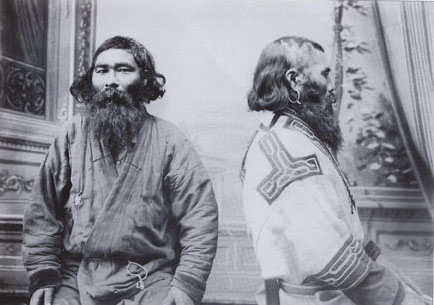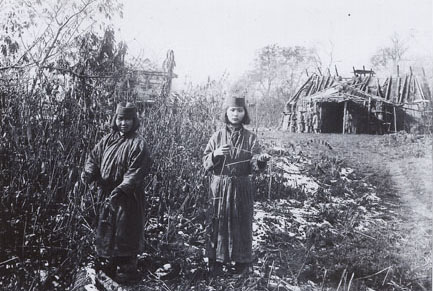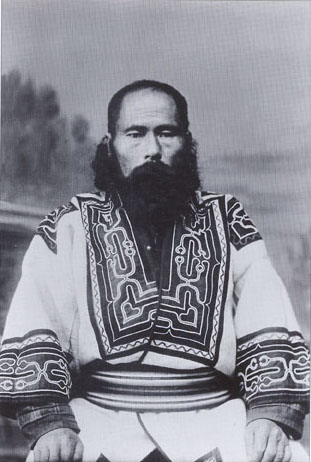The first Lithuanians in Japan

It is clear who was the first Japanese to visit the territory of Lithuania. However, it is not that easy to say who were the first Lithuanians to visit Japan. The difficulty arises not because there is no data but because it is complicated to define a Lithuanian during this period. Until the establishment of the Lithuanian Republic in 1918, Lithuanian identity was not based on language. For centuries, the residents of the Grand Duchy of Lithuania (GDL), Belarus, and part of Poland and Russia called themselves Lithuanians. Such identity remained throughout the 19th century when the GDL no longer existed. Those Lithuanians spoke various languages, the most important of which were Polish, Belarusian, Lithuanian, and Yiddish.
Only later, amid the 20th century, the distinction between identities emerged, and the mentioned inhabitants had to choose between modern identities. Some of them became Poles and Belarusians. History determined that the first Lithuanians, who were building relations with Japan during the 19th, did not speak Lithuanian. However, they felt Lithuanians and had roots in the country. This topic is dedicated to them.
(Japan; photo by B. H. Tiškevičius / J. Stubbe archive)
Josifas Goškevičius
(Язэп Антонавіч Гашкевіч, 1814-1875)
The author of the first Russian-Japanese dictionary and the first Russian consul in Japan was... Lithuanian, in the sense that he was born in the territory of former Grand Duchy of Lithuania. Josifas Goškevičius is one of the first japanologists of the Russian Empire and a man who significantly contributed to Japan-Russian relations. In addition to his native Belarusian and Russian languages, he spoke Chinese, Japanese, Manchu, Korean, and Mongolian. His life story went through such parts of the world as Minsk, St. Petersburg, Vilnius, Astrava, Beijing, and Hakodate.
His book "On the Roots of the Japanese Language" was published in Zavadskis printing house in Vilnius.
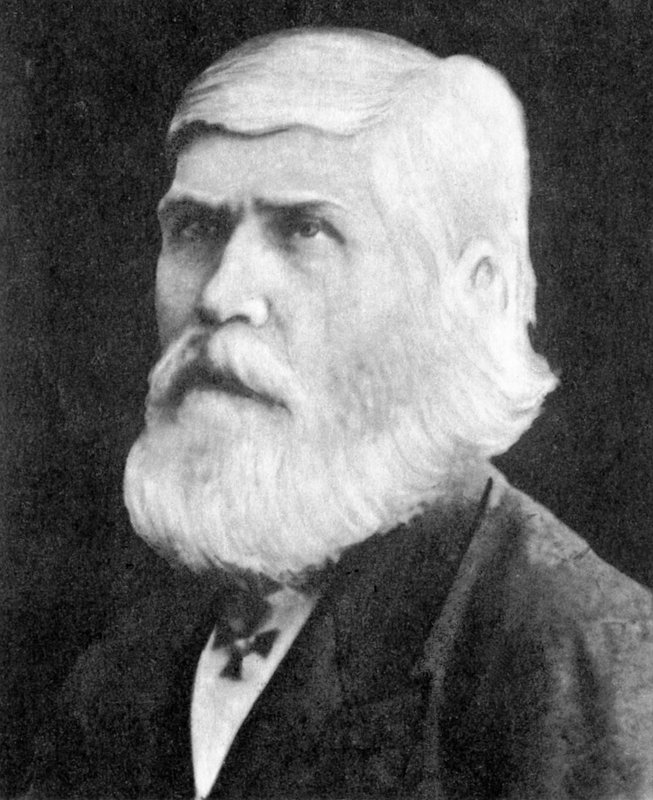
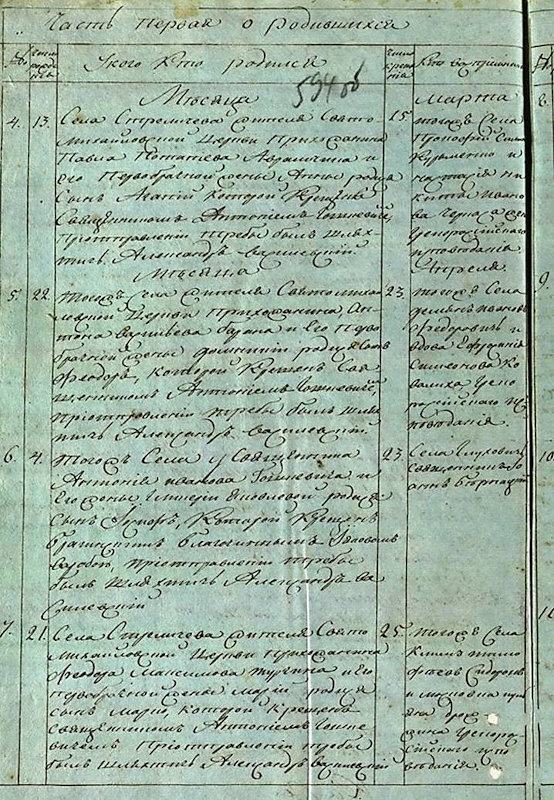
The whole Goškevičius family originated from the famous lineage of the Grand Duchy of Lithuania.
(birth certificate from Belarus State Archive, НГАБ Ф. 136. Воп. 13. Спр. 514. А. 594 адв.)

(Žirovičiai monastery and seminary, Pompei Nikolaevič "Бѣлоруссія и Литва. Историческія судьбы Сѣверозападнаго Края" p. 187, British Library HMNTS 9456.g.10)
At that time, he was interested in Asian languages, translated the Old Testament from ancient Hebrew into Russian.

(St. Petersburg Spiritual Academy at the beginning of the 20th century)
It was the 12th Russia’s mission to Beijing, which was dedicated to the spread of Russian culture, religion, and language in the Chinese Empire. Goškevičius spent almost ten years in China (until 1848), during which he learned Chinese and became interested in other East Asian languages, such as Korean, Mongolian, Manchu, and Japanese.

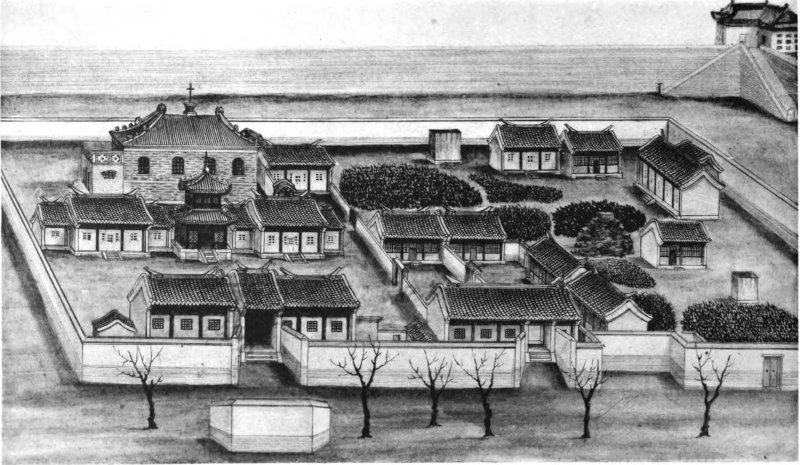
(the Mission c. 1850 m.; K. A. Skačkov album)
(the first Orthodox church in China)
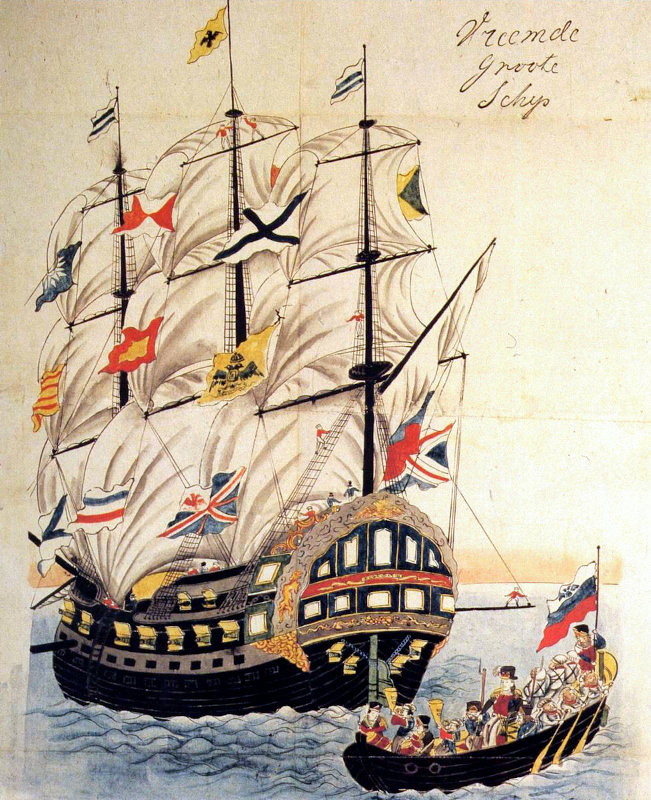
While the great Western states were competing for the trading partnership with Japan, the Russian Empire sent the first mission to this country. J. Goškevičius was also involved in this mission as a translator of Chinese and Japanese texts.
On the 7th of February, 1855, with the active participation of Goškevičius, Russia and Japan signed the Shimoda contract, paving the way for trade and diplomatic relations between the two countries.

("Launch of Heda ship", unknown Japanese painter, 1855; Goškevičius is depicted close to the ship with his name written next to him)
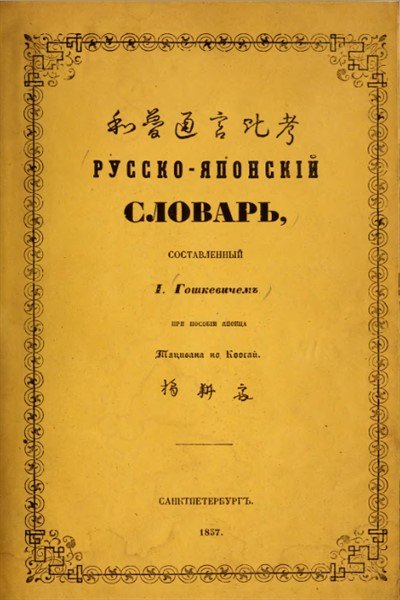
Sailing by the shores of Japan, Goškevičius began to learn Japanese. In Heda city, he met the Japanese Buddhist monk Tachibana Kosai who continued teaching him, and later both went back to Russia. On the 1st of August 1855, their ship was hijacked and taken captive by the British near Hong Kong. Goškevičius and Tachibana spent captivity in Hong Kong until the end of March 1856. Here they compiled a dictionary, which included 16,000 words. He published it after returning to St. Petersburg. It was the first Japanese-Russian dictionary in history.
(Японско-русский словарь, составленный И. Гошкевичем при пособии японца Тацибана-но Коосай. — СПб, 1857. XVII. — 462 с.)

(conculate-church in Hakodate)
Alexander Gorchiakov, the current Foreign Minister, appointed him the consul after assessing his Japanese language knowledge. Goškevičius arrived in Japan on the 5th of November, 1858 and reached Hakodate on the island of Hokkaido. In the same year, he went to Shogun's residence in Edo to discuss the trade and shipping contract. In 1862, he was the first man from the Russian Empire to meet Japanese shogun Tokugawa Ieshige. The work of the first consul is valued in both Japan and Russia. He contributed to the construction of the Resurrection of Christ Church in Hakodate, the first orthodox church in Japan. Next to it, the first Russian embassy, a Russian language school, and a hospital were established. Since the consul expressed great respect for the local customs, culture and sought to get acquainted with them, Russia gained great respect in Japan. The Russian language became the most popular foreign language in Hokkaido.

In 1864, deteriorating relations with a Russian military attaché in Hakodate prompted him to voluntarily apply for dismissal as consul and return to St. Petersburg. He worked here for several years in the Asian Department of the Ministry of Foreign Affairs. He later applied for dismissal from the ministry and ended his diplomatic career.
(from Oт Немана к берегам Тихого океана; painter A. F. Korčiagin)

After settling in the Moliai (Малі) village near Ostrava, he spent time studying Japanese and improving his vocabulary. He wrote the book "On the Roots of the Japanese Language" (ru. О корнях японского языка), which was published in Vilnius in 1899. Goshkevich accumulated a large library and a collection of valuable maps, containing 1346 Japanese engravings and books, 47 maps.
Buried in the Ostrava Provoslav cemetery. In 1989, his bust was exhibited in Hakodate Museum and the Heda Town Museum.

(entry of death; Lithuanian State Archives, Ф. 605. Воп. 20. Спр. 484. А. 59 адв.)
Benediktas Tiškevičius
(Benedykt Henryk Tyszkiewicz, 1852-1935)
Benediktas Tiškevičius, whose family estates were in Raudondvaris near Kaunas, is one of the first Lithuanian photographers. Due to his passion for photography, he traveled the world a lot, capturing distant lands and cultures. Japan was one of the countries he visited. He traveled to this country in 1875 and became the first Lithuanian photographer to be there and take pictures.
(photo from Japan by B. H. Tiškevičius; J. Stubbe archive)

(click on dates to see more information)
-
 Born on the 9th of December 1852 in Nemėžis, near Vilnius
Born on the 9th of December 1852 in Nemėžis, near VilniusHe was the only child in the family and became an orphan very early. After the death of his parents, his maternal grandfather, Benediktas Emanuelis Tiškevičius (1801–1866), brought him to Raudondvaris and took care of his education. On the 23rd of August 1866, after grandfather‘s death, the fourteen-year-old Benediktas Henrikas Tiškevičius became one of the wealthiest people in Europe.
(Nemėžis estate, 2007; Juliux / Wikimedia)
-
In 1875, began trips and photography

In 1874, he visited America and married Clara Elizabeth Bancroft (1857–1883) there. The visit also allowed him to gain interest in photography which soon became his passionate hobby.
After seeing the most modern yachts in America, he desired to have the best yacht in the world and ordered one at the Le Havre shipyard. It was named Żemajtej thus remembering the Lithuanian origin. He planned to sail around the world on this yacht.
During his life, Tiškevičius traveled a lot and managed to visit many Asian counties, including India, China, and Japan, and, therefore, can be considered to be the first Lithuanian to visit Japan. He brought many photos from his travels. When not traveling, the count lived in Paris and spent much time in Nice.
In 1876, B. Tiškevičius held his first photo exhibition in Philadelphia and received a gold medal for unique photographs from a trip to Algeria.
-
Since 1883 regularly returned to its holdings in Lithuania

(Raudondvaris in 2012; Juliux / Wikimedia)
In 1882, Tiškevičius family settled on the island of Madeira. His wife, Clara Elizabeth, soon died here, and the 31-year-old count was widowed with three children. He buried his wife in Raudondvaris (Lithuania), where his grandfather's remains rested.
Although he lived in France and traveled to various countries, the count took care of the manors of Raudondvaris and Viala (100 km southeast of Vilnius) in his native lands. Raudondvaris was especially important for him as it was the place where the remains of his beloved ones rested. Here B. Tiškevičius also accumulated his collection, which became one of the richest private collections in Lithuania. The count was also keen to surprise the locals by his extravagance. At his request, in the evenings, oriental lanterns hung in Raudondvaris Park, the foals were dressed in oriental clothing and carried the count dressed in mandarin clothing in a palanquin.
-
In 1914, settled in France
During the WWI, B. H. Tiškevičius lived in the town of Saint-Nazaire at the mouth of the Loire. He stopped traveling after the war.
-
On the 13th of May 1935, died in Menton (Southern France)

Buried in Nice, in the family grave next to his mother.
(photo by Antoni Giurtler; Kretinga Museum archive)
Bronislovas Pilsudskis
(Bronisław Piłsudski, 1866–1918)

Bronislav Pilsudski was one of the first people from Lithuania to visit Japan. In Russian Empire, B. Pilsudski became a scientist and ethnologist, one of the first in the world to perpetuate the cultures of the peoples of Sakhalin, Hokkaido, and the Kuril Islands. He is one of the first researchers of the Ainu people, who captured their way of life in texts, sound recordings, and photographs. Pilsudski was a man with a dual ethnic identity, both Lithuanian and Polish. More frequently he introduced himself as a Lithuanian. In memoirs, the contemporaries of Pilsudski especially emphasized his tolerance and love for representatives of all different cultures and nationalities.

Born in a large family of twelve children. One of his brothers was the future President of Poland, Josef Pilsudski.
(remains of Zalavas manor; Vikimedija / Vilensija)

In the 1881–1882 academic year, he studied in the fifth grade of Vilnius I Gymnasium. At the end of the 19th century, anti-tsarist ideas started spreading, which also captivated Piłsudski. For these ideas, he was removed from the gymnasium in 1885.
(members of student club "Spojnia", brothers Bronislovas and Josefas Pilsudskis are second and third from the left)
Here he became actively involved in the organization that intended to assassinate Tsar Alexander III.

He arrived on this Pacific island by boat from Odessa in August of the same year. While living here, he became interested in the culture of the local peoples. As a self-taught scientist, he studied the culture of endangered tribes – Ainu, Nivchs, and Orok. He took pictures of them and collected audio recordings.
After a 13-year sentence, he received an offer from the Russian Academy of Sciences to study the Ainu, Nivchs, and Orochen cultures of the southern Sakhalin. Pilsudski married a local resident, Chuhsamma Bafunke. His descendants still live in Hokkaido.

Here he recorded examples of the Ainu language and eventually published a 10,000-word Ainu dictionary, a 6,000-word Nivch dictionary, and a 2,000-word Manchurian dictionary. He described the culture, customs, and traditions of these nations and took about 300 photos.
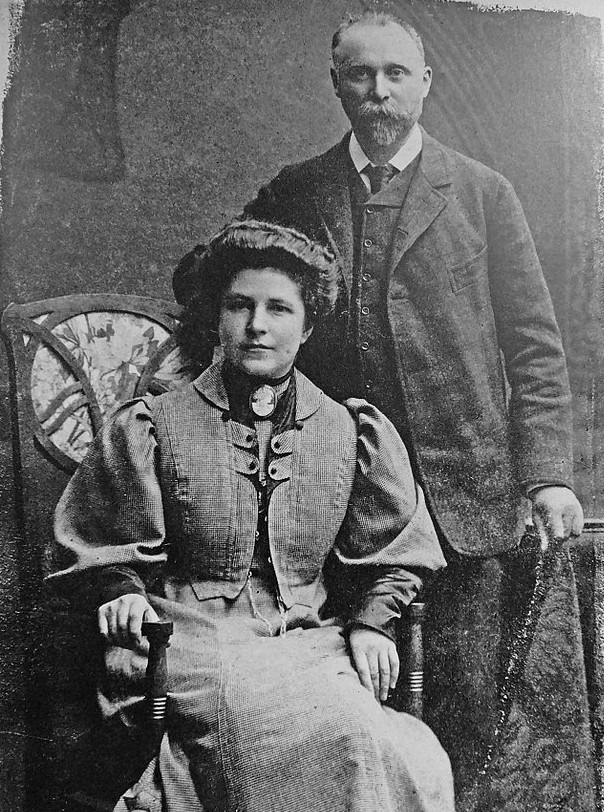
After returning to Europe from exile, he lived in Krakow and Zakopane.
(Wikimedia / Piotrus)
With the outbreak of WWI, he left for Switzerland and, in 1917, moved to Paris.
The remains rest in the cemetery of Les Champeaux in Montmorency near Paris. The Old Cemetery in Zakopane has a symbolic tomb. The monuments dedicated to his memory were erected in Sakhalin (Russia) and Hokkaido (Japan). Besides, a memorial plaque was attached to the wall of the Polish Academy of Sciences Library in Krakow.
(photos by B. Pilsudskis from Druskininkai City Museum archive)
Bibliography
- Kuczyński. Antoni. Bronisław Piłsudski (1866–1918) zesłaniec i badacz kultury ludów Dalekiego Wschodu. s. 53–54.
- Majewicz, Alfred F. 2004. Materials for the Study of the Ainu Language and Folklore. Walter de Gruyter.
- N.D. Raudondvario grafas B. H. Tiškevičius - fotografas. Kauno rajono muziejus.
- N.D. B. H. Tiškevičiaus fotografijos. Kauno rajono muziejus.
- Neimantas, Romualdas. 2003. Nuo Nemuno iki Fudzijamos. Kaunas: Spindulys.
- Piłsudski, Bronisław. 1998. The Collected Works of Bronisław Piłsudski. Walter de Gruyter.
- Гавриков, А. А. 2008. Гошкевич И. А.: дипломат, востоковед, путешественник. Вестник Международного центра азиатских исследований. № 14/2008. Иркутск, с. 65-69.
- Щеглов, Гордей Эдуардович. 2004-2021. Иосиф (Осип) Антонович Гошкевич Минская духовная семинария.
- Файнберг, Э. Я. 1967. И. А. Гошкевич — первый русский консул в Японии (1858—1865 гг.). Историко-филологическое исследование. М.: Наука, С. 505-508.
- Кузнецов А. П. 2007. Вклад И. А. Гошкевича в становление русско-японских отношений в XIX веке. Санкт-Петербургский государственный университет.
- Накамура, Синтаро. 1983. Японцы и русские: Из истории контактов. М.
- Обухова, Н. И. 2019. Иосиф Антонович Гошкевич — миссионер, дипломат, лингвист, востоковед. Минск: Мин. обл. ин-т развития образования.
- 港区ゆかりの人物データベース 『増田甲斎』
須藤隆仙『箱館開港物語』北海道新聞社、2009年。ISBN 978-4-89453-519-0。 - 伊藤一哉『ロシア人の見た幕末日本』吉川弘文館、2009年。ISBN 4642080201。

